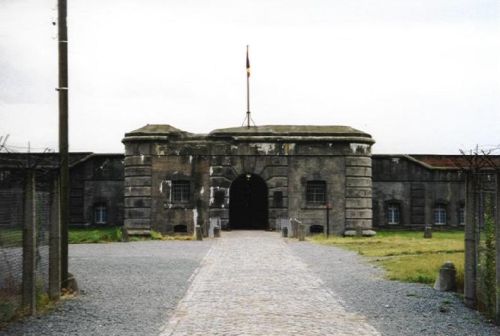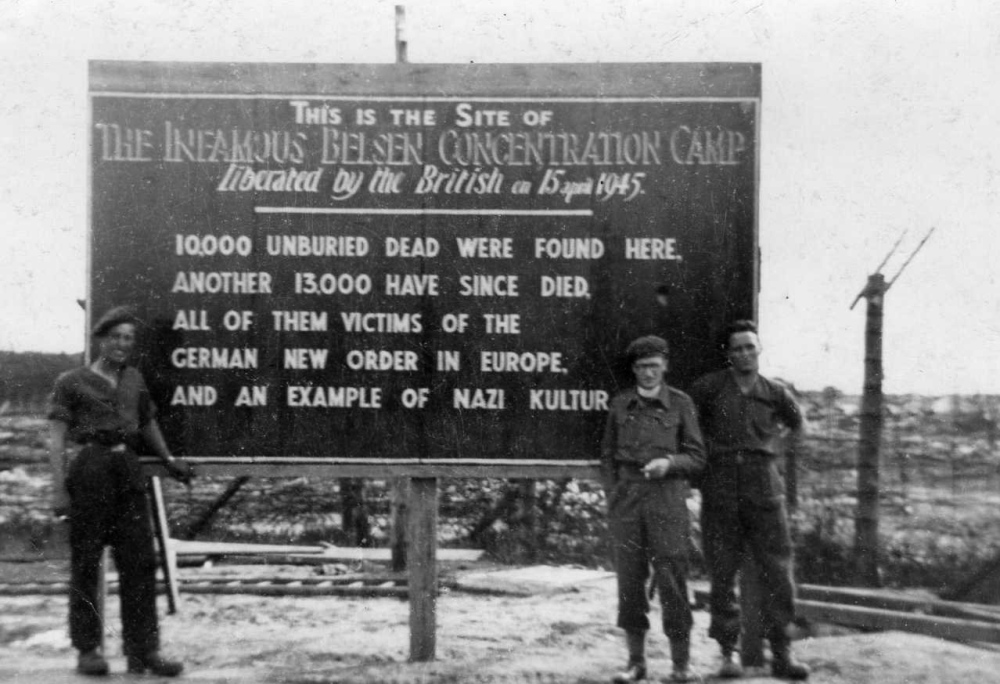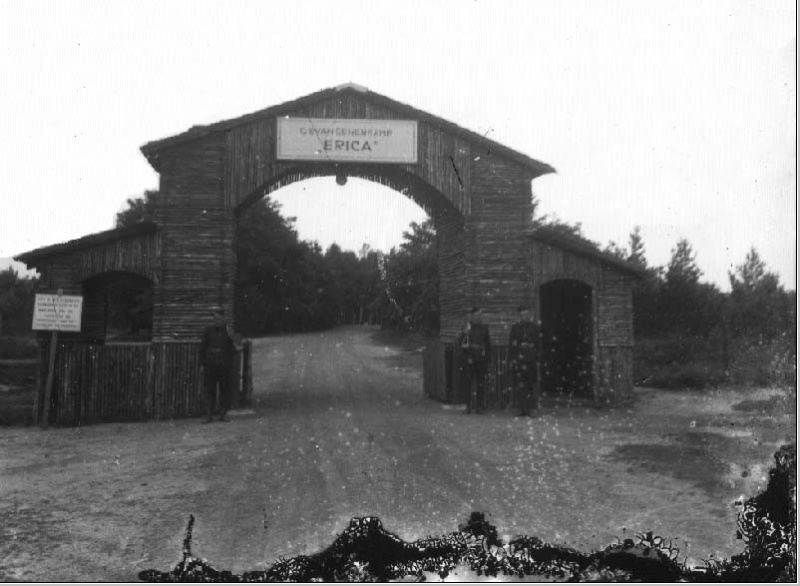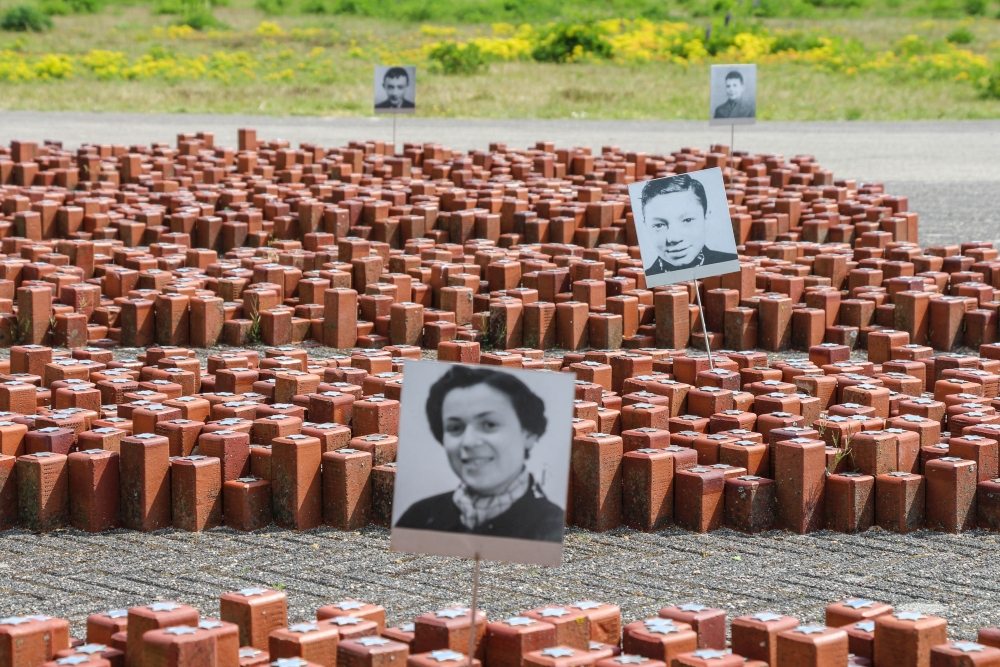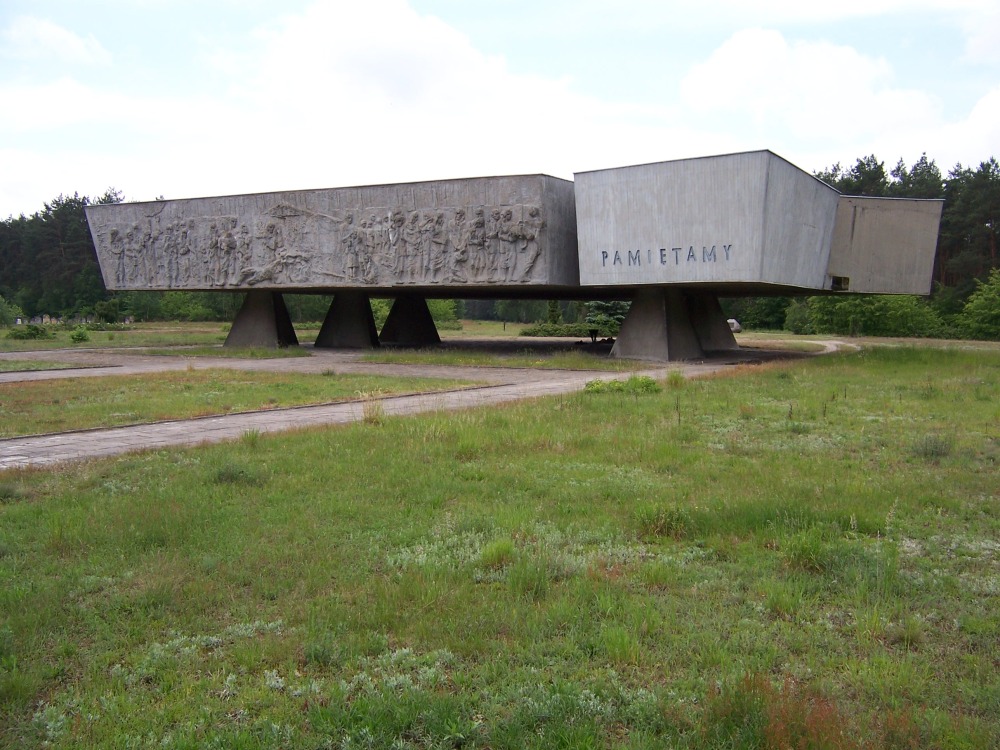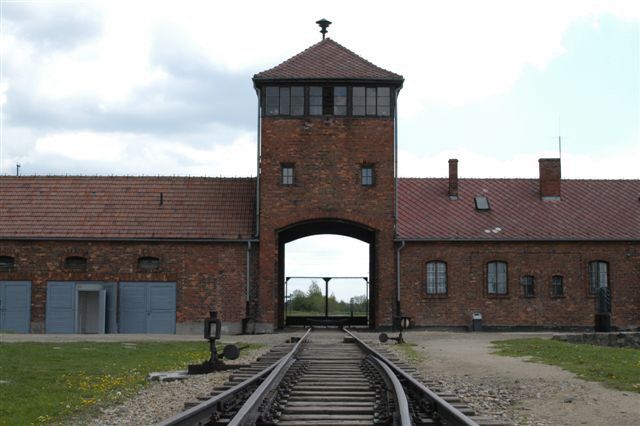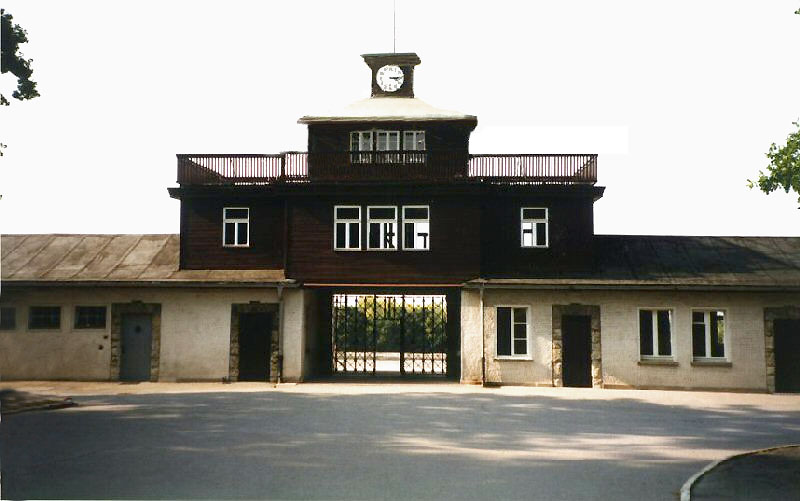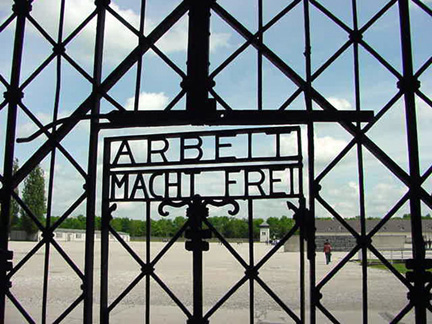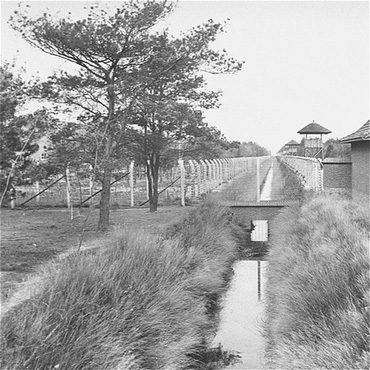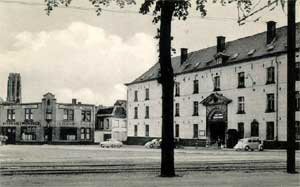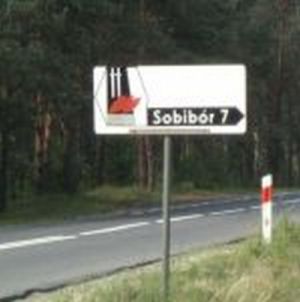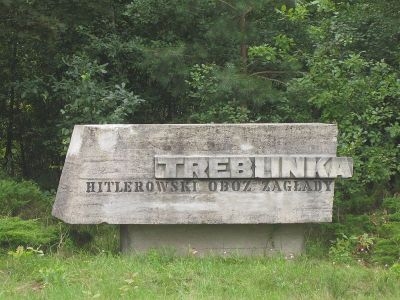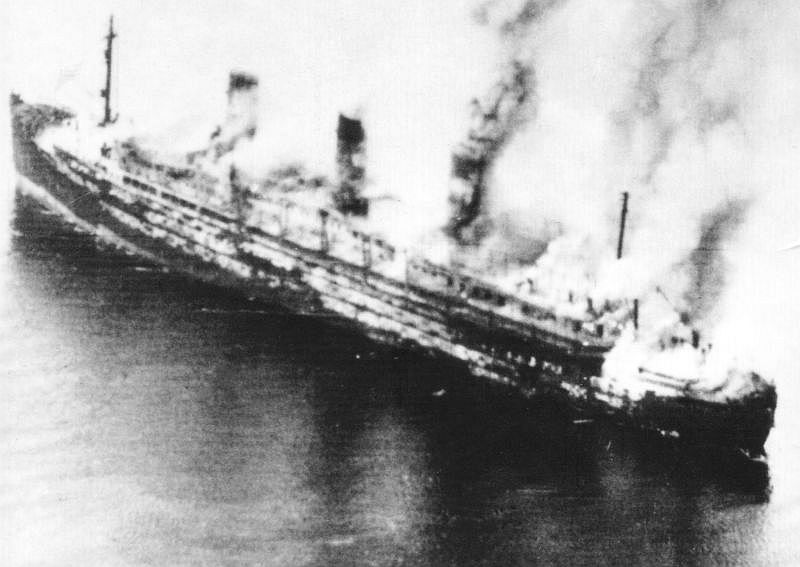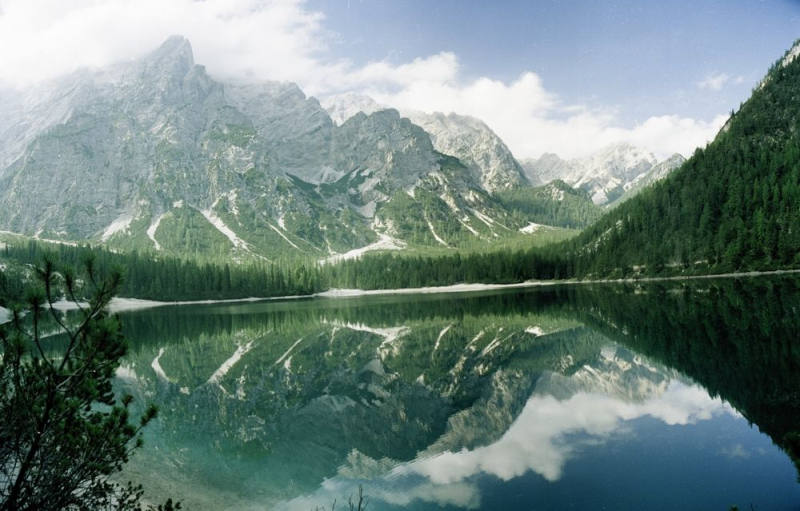Articles
- Article by Gerd Van der Auwera
- Published on September 20th, 2012
Auffanglager Breendonk
Fort Breendonk owes its existence to the strategic importance of Antwerp in the 19th century. Antwerp was developed into a "national redoubt", a kind of fortress, in which the government and other prominent people were able to hide from an enemy attack. For this purpose, a belt of forts was established around the city. At the beginning of the 20th century the construction of eleven new forts started, including Breendonk. In 1909, the construction of that fort began. Around the concrete buildings, a wide canal was created and the earth that came out of the canal, covered the buildings. At the entrance, a partly wooden drawbridge was made over the canal. In 1913, the first American soldiers moved into the fort.
- Article by Gerd Van der Auwera
- Published on February 11th, 2016
Camp Bergen-Belsen
Bergen-Belsen was liberated by the British troops on 15 April 1945. It was not the first camp to be liberated, but it was most likely the most infamous camp at that time. The gruesome scenes of Bergen-Belsen which were captured by British army photographers, soon went round the world and pictured the cruel Nazi regime. These pictures finally revealed the true nature of the concentration camps to the world. Bergen-Belsen would soon serve as an example of Nazi camps. But this is not entirely in keeping with the truth.
- Article by Frank Meijerink
- Published on January 10th, 2015
Camp Erika
In 1923 Baron Van Palland donated his 18th century castle en 2000 hectare woodland belonging to his estate Eerde, in the proximity of Ommen, Province of Overijssel, to the British Indian Jiddu Krishnamurti. This man was the head of the order of the Star, a theosophical movement. During the summer of 1924 the first Star camp gathered in the woods of this estate. In the following years small wooden houses and large wooden barracks were built in this hilly area the Besthemerberg, to house administration, kitchen, warehouses, lavatories and washrooms. Krishnamurti left, but the meetings continued until 1939. In 1940 the meeting was postponed because of the threat of war.
- Article by Kevin Prenger
- Published on June 15th, 2015
Camp Westerbork
Closely interwoven with the history of the persecution of the Jews during World War II in the Netherlands is transit camp Westerbork. During the war it was officially referred to by the Germans as Polizeiliches Judendurchgangslager Westerbork. More than 101,000 Dutch Jews were deported via this camp to the concentration and extermination camps of the Third Reich. Only a small part of them survived the Holocaust and returned to the Netherlands after the war.
- Article by Matthias Ouwejan
- Published on November 21st, 2020
Chelmno
Extermination camp Chelmno – Kulmhof in German – was part of the systematic killing machine that the Nazis created in occupied Polish territories between 1939 and 1945. After the war, there was little evidence of the camp’s existence, and it was a long time before the events that unfolded there became known.
- Article by Gerd Van der Auwera
- Published on September 7th, 2017
Concentration and extermination camp Auschwitz
In September 1939, the German army invaded Poland. The Poles could not cope with the German attacking power and were forced to retreat time and again. During their withdrawal, they destroyed as many bridges as possible to slow the advance of the Wehrmacht. That way, they also blew the bridge across the Sola near Oswiecim. Their efforts were in vain as the German troops advanced relentlessly. At the end of September Oswiecim was captured. The synagogue was burned down but would be rebuilt in 1941. In October 1939, certain parts of Poland, including Oswiecim and surroundings, were absorbed into the Third Reich. The name was changed to Auschwitz. The hitherto unknown small town was to play a role in the coming years that would evoke sentiments of horror for years afterwards.
- Article by Robert Jan Noks
- Published on November 22nd, 2017
Concentration and extermination camp Majdanek
Nowadays, the location of the former concentration camp Majdanek lies well within the city limits of Lublin, a city in eastern Poland near the Ukrainian border. Today it looks somewhat like a park at some 2,5 miles from the city center. It is surrounded by modern apartment buildings and a Roman Catholic cemetery that was already there before the camp was built. The highway to the Ukraine and Russia runs along the former camp grounds. In the war, this was a major route for the German army to the eastern front and from the fall of 1943 onwards for the retreating German forces.
- Article by Gerd Van der Auwera
- Published on September 27th, 2017
Concentration camp Buchenwald
Weimar, summer 1937, a pretty, picturesque town in Thüringen. The town where people such as Goethe, Schiller. Liszt and Bach have spent a considerable part of their lives. Three miles away lies Ettersberg, where one of the first Nazi concentration camps was established. On July 16, 1937 the first batch of 300 prisoners arrived in Konzentrationslager Ettersberg, from August 6, 1937 onwards better known as concentration camp Buchenwald. Initially, it was intended for political opponents of the Nazi regime, hardened criminals, anti-socials, Jehovah witnesses, Jews etc.
- Article by Kevin Prenger
- Published on August 17th, 2017
Concentration camp Dachau
Even more than 60 years after the collapse of the Third Reich, the name Dachau still evokes memories of the notorious concentration camp that was located there between 1933 and 1945. Inmates of more than 30 nationalities were imprisoned in this camp. Many died from the dismal living conditions. A large number of Dutchmen were also imprisoned in this camp as they had put up resistance against the German occupier.
- Article by Kevin Prenger
- Published on May 30th, 2015
Concentration camp Vught
During the occupation of the Netherlands, the Germans built various types of concentration camps. The three most important camps were located in Amersfoort, Westerbork and Vught. Camp Vught took up a special position, because it was in fact the only official concentration camp in the Netherlands. The camps in Westerbork and Amersfoort were so-called Durchgangslager (transit camps), while camp Vught was a Konzentrationslager (concentration camp).
- Article by Gerd Van der Auwera
- Published on February 10th, 2013
Dossinkazerne (Sammellager Mecheln)
After the Germans conquered Belgium, the military administration gradually started pursuing the same racial policy as in Nazi Germany. The SS-Sammellager Mecheln (‘Mechelen transit camp’), also known as the Dossinkazerne, played an important role in this policy. Before dealing with the history of this transit camp, we will first discuss the pursued racial policy in Belgium, as they cannot be separated from one another.
- Article by Robert Jan Noks
- Published on October 24th, 2017
Extermination camp Sobibor
Sobibor is a small village in southeast Poland in the province of Lublin, on the railway between Chelm and Wlodawa and a few miles distant from the present Polish eastern border with the Ukraine. Had it not been for World War Two, it would have remained no more than an unimportant and unknown hamlet. History though decided otherwise. In the vicinity of the village, across from the local train station and a few miles from the frontier river Bug, the Germans constructed an extermination camp in the spring of 1942 in a remote, wooded and swampy location which was to give Sobibor a sinister place in history.
- Article by Gerd Van der Auwera
- Published on November 4th, 2017
Extermination camp Treblinka
Regarding the Holocaust, Auschwitz immediately comes to mind. It is the best known Nazi extermination camp. It is often forgotten though that Auschwitz was not the only extermination camp, in addition there were Camp Sobibor, Belzec and Treblinka. This article is about the last camp. It was an element of Aktion Reinhard and perhaps the most efficient extermination camp. Over a period of 18 months, approximately 800,000 people were killed here.
- Article by Peter Kimenai
- Published on December 11th, 2019
Floating concentration camps in the Bay of Lübeck
During the British bombing of the floating concentration camps Cap Arcona and Thielbek on May 3, 1945 more than 7,000 people died. That disaster in the Bay of Lübeck took place during the very last phase of the Second World War in Europe. The extremely violent death struggle of the Nazi regime was a complete chaos of German rear-guard battles, Allied bombardments, and senseless displacements of tens of thousands of concentration camp prisoners.
- Article by Kevin Prenger
- Published on May 5th, 2017
VIP prisoners of the SS
It was a distinguished company that was assembled early May 1945 in Hotel Pragser Wildsee, built in chalet style, in southern Tirol, Italy. The group consisted of nearly 140 persons of 17 different nationalities. There were secretaries, high ranking clergy, generals and princes. Two Churchills were also present. From their hotel room they looked out on an emerald green mountain lake, ringed by fir trees and mountain tops. One of the hotel guests described the location as a " paradise on earth". For many of them, it was the first time in months or even years they had slept in a normal bed without having to worry about tomorrow’s day. At last, they had escaped from the claws of the SS.
